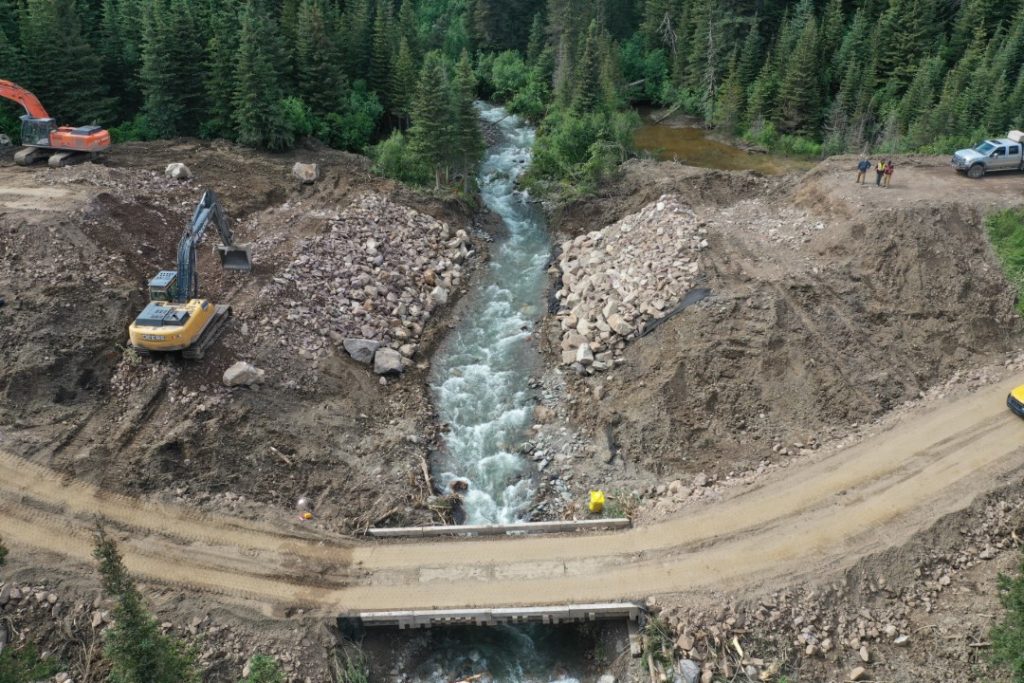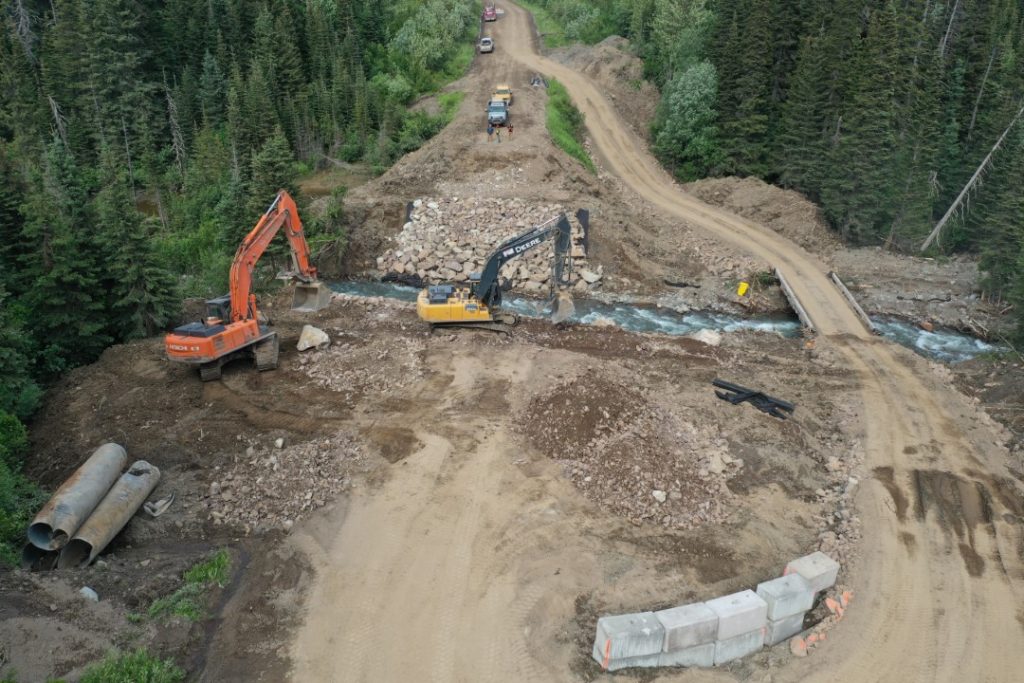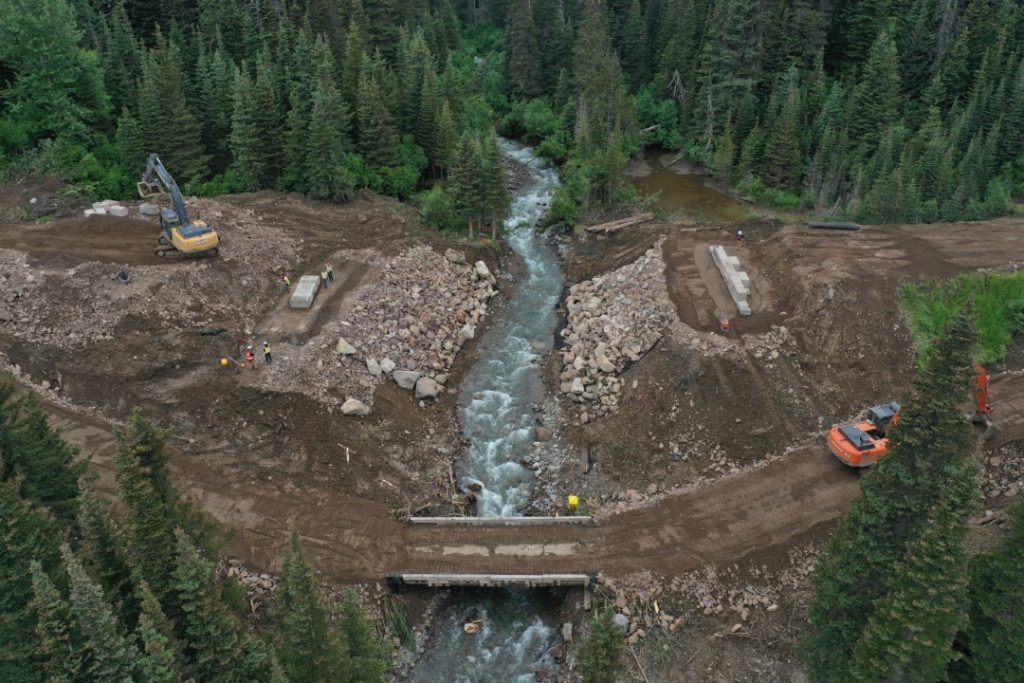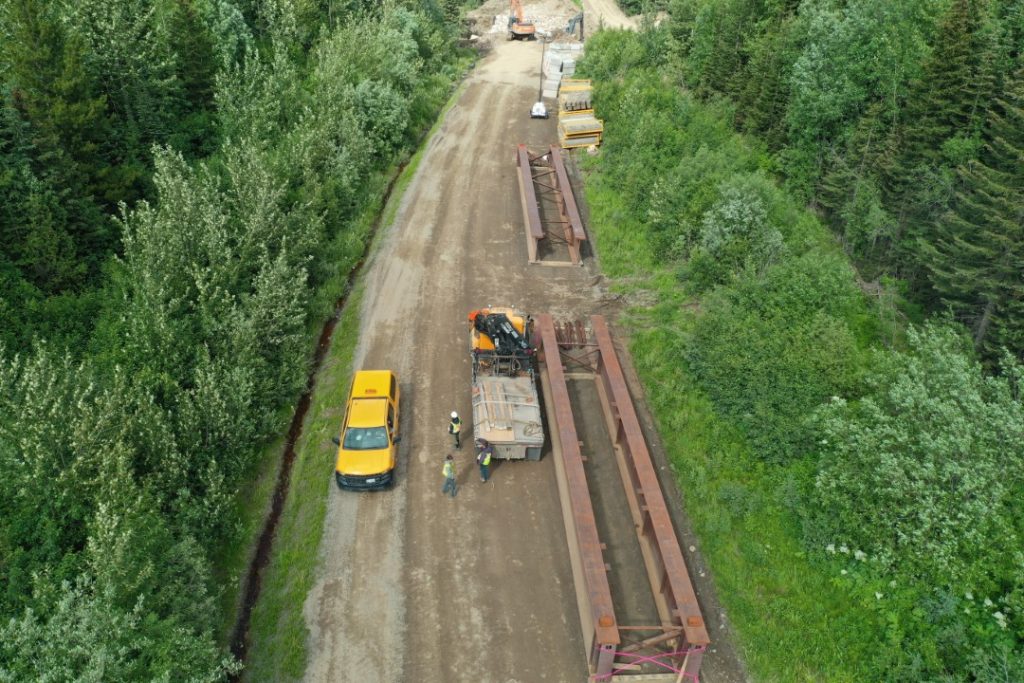Creativity and having a history of great relationships allowed the Smithers and Fort St. John’s Dawson Road Maintenance crews to replace an old, wooden culvert with a sturdy new bridge on Babine Lake Road.
Little Joe Creek runs underneath a section of Babine Lake Road roughly 30-kilometres from Smithers and was neither little nor a creek following several inches of rainfall that occurred on July 4. The significant rainfall paired with the tail end of this season’s freshet rush led to the creek swelling significantly and destroying the wooden culvert that ran underneath Babine Lake Road. When the culvert washed away, much of the groundwork that surrounded the old culvert washed away as well.
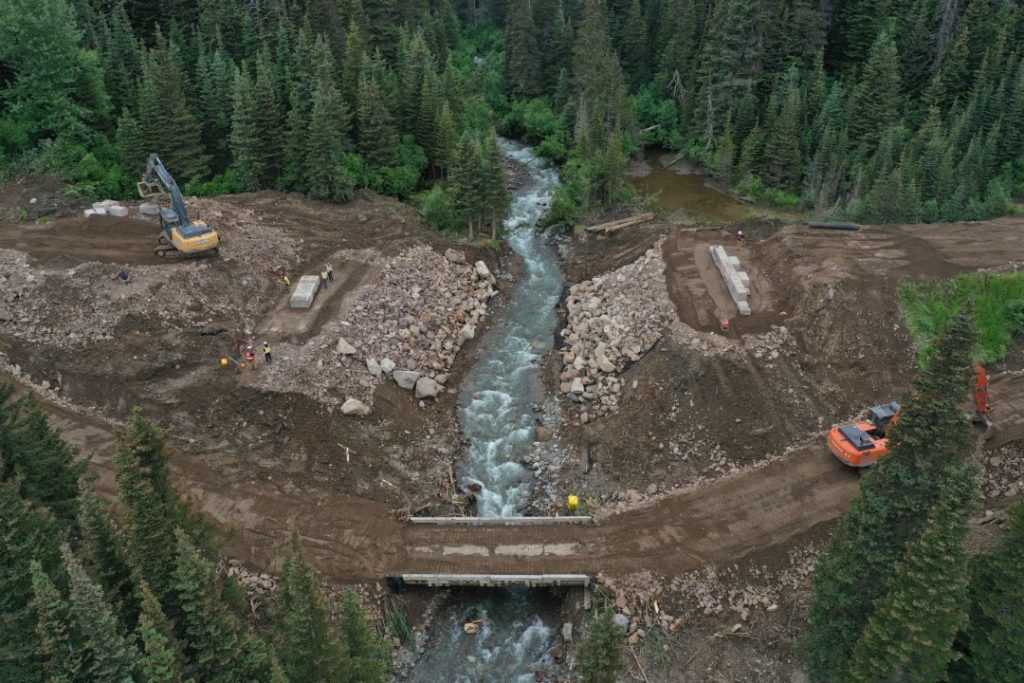
The old culvert stood 1.2-metres tall with a 700-milliletre overflow. It did the trick for the past 60 years but was no match for this sudden flood.
“We weren’t involved initially because it wasn’t originally a bridge failure,” said Mark Graydon, Bridge Lead for DRM. “A day or two after the washout, we got a call from the B.C. Ministry of Transportation and Infrastructure (MoTI) wanting us to put a new bridge in where the culvert previously was.”
“There was a sense of urgency to get the road safely open as quick as possible.”
Babine Lake Road is a major logging route, with more than 100 vehicles on the gravel road each day. The washout took place roughly 30-kilometres from Smithers. The detour through the Granisle Connector tacked on an extra four hours for truckers willing to make the route. The sawmill in Smithers also shutdown while the road was being worked on. (The Granisle Connector isn’t a DRM maintained road, but DRM crews did a base repair on the road to benefit the stakeholders and community members accessing the detour while Babine Lake Road was being repaired.)

While the Fort St. John DRM bridge crew and other local contractors assembled plans for a new bridge. Graydon reached out to Pacific Inland Resources forestry division to help secure a temporary 40-foot forestry bridge. The bridge was much smaller than the new one they were preparing to install, but big enough to safely transport equipment and necessary public traffic across the creek.
An engineer from Prince George – a work acquaintance of Graydon’s – quickly put safe and certified plans together, which allowed crews to begin working right away. They started by clearing away the banks of the river and other soft spots in the road to make room for the rip rap and concrete blocks to stabilize the new bridge.
In another time-saving maneuver, Graydon found an area of exposed rock along Babine Lake Road that was 70km closer than the quarry they initially expected to use. Not only did the new blast site give them quicker access to an abundance of rip rap, the blast also cleared away an area that gave the Service Area 25 crews headaches for ditching in the springtime.
“We kept finding solutions and creative ways to work on this project, like the blasting, that allowed us to get the job done ahead of schedule,” said Kevin Coss, DRM Quality Manager. “The blast saved at least five days of driving rocks from that other location.”

Once the slope and banks were armoured with riprap and the ballast walls were installed, the beams for the bridge needed to be set in place. The only issue with that was the crane they had on site was not big enough to lift the 120ft long beams. A bigger, capable crane was available in Alberta, but it would have taken 10 days for it to arrive on site. Graydon and the DRM team made the decision to take apart the two 120ft beams and their bracing.
“By the time that crane would have showed up, we figured we could turn the two beams into four, position them and properly reconnect them in place,” said Coss. “It was another big time and money saver on this project.”
“This job wouldn’t have been possible if our crews didn’t have such an awesome attitude about the work. We were all cognisant of the work that was required and we adjusted to the changing plans as the job went on. We were all happy to do our part to get the road back open,” said Graydon.
For their efforts, not only did they receive praise from the nearby communities, but also the MoTI.
In a monthly email update from MoTI to local contractors, Kevin Volk, the Assistant Deputy Minister, Integrated Transportation and Infrastructure Services said, “upon learning of the washout, staff acted immediately to set up a detour and get to work installing a 120-foot bridge. The team expects to have the road reopened early next week – major kudos and thanks for the hard work and fast action on this one.”
Not only is the bridge and road operational again, because of the remarkable work from DRM crews, the Little Joe Creek can flow safely without disrupting traffic.

